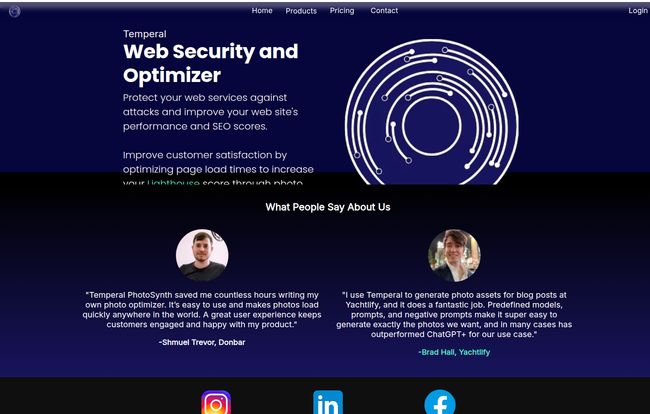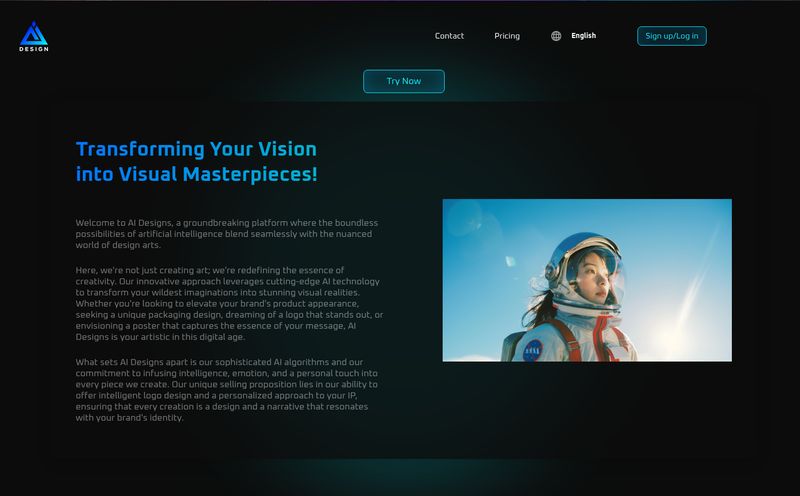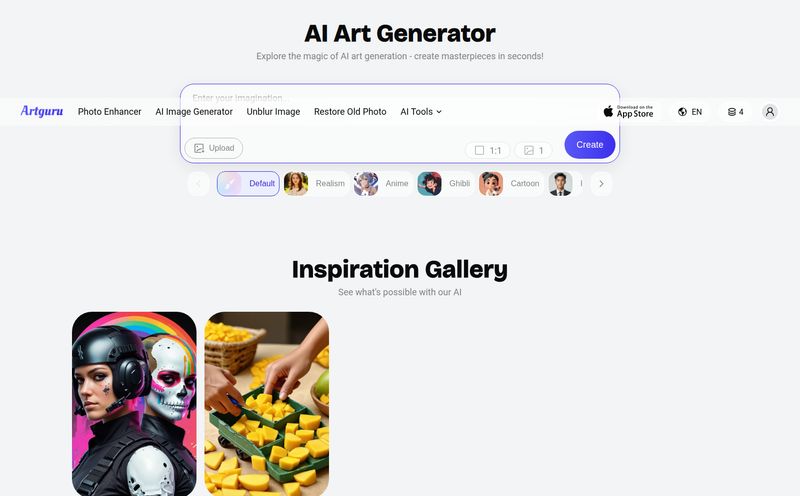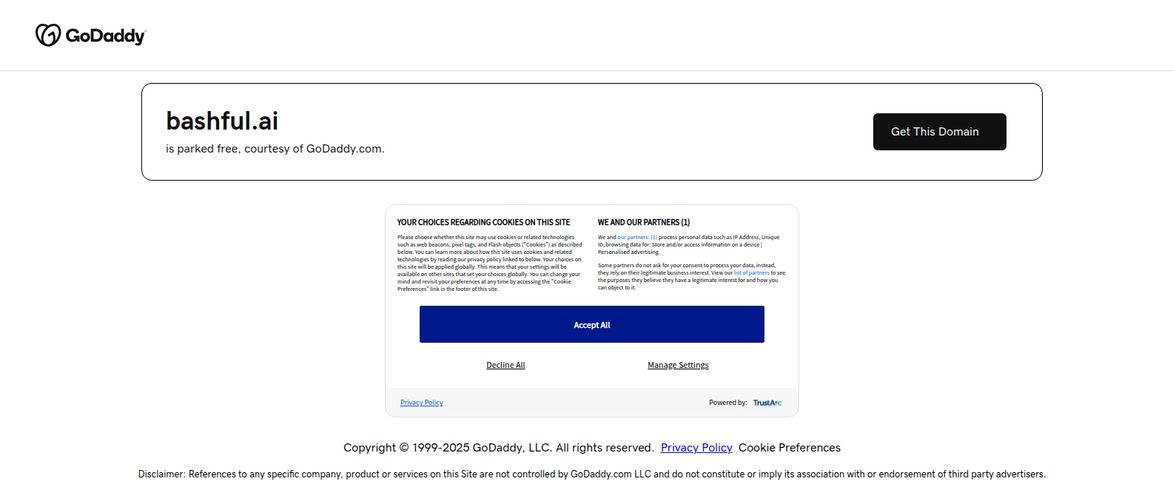As an SEO, I live and breathe site speed. We’ve all been there. You craft the perfect 2,000-word article, you pour your heart into the research, and you find some decent-looking stock photos. You hit publish, feeling pretty good about yourself. Then you run it through Google's PageSpeed Insights and... oof. That Largest Contentful Paint (LCP) score is a gut punch. It’s almost always the images, isn't it? Bloated, unoptimized, and dragging your beautiful content down into the SEO abyss.
For years, the solution has been a clunky, multi-step process. Manually resize, run it through a compressor tool, upload to WordPress, maybe use another plugin to convert to WebP... it’s a chore. So when a tool like Temperal PhotoSynth pops up on my radar, claiming to handle all of that and generate AI images, my curiosity is definitely piqued. But so is my skepticism. Is this another all-in-one that’s a master of none? I had to take a closer look.
So, What Exactly is Temperal PhotoSynth?
Let’s get one thing straight: this isn't just another image compression plugin. Temperal PhotoSynth calls itself a "managed photo image service." That sounds a bit corporate, but the idea is actually pretty cool. Instead of you optimizing images before you upload them, it handles it all on-the-fly, in real time.
Think of it like a valet service for your website's JPEGs and PNGs. You just point to an image, and Temperal’s system fetches it, optimizes it to perfection for whatever device is requesting it, and serves it up lightning-fast via its own CDN. This on-demand processing and caching is where the magic happens for your site performance and those all-important Core Web Vitals. It's a fundamentally different approach than the old 'set it and forget it' plugins. It’s dynamic.

Visit Temperal PhotoSynth
The Two Pillars: Smarter Optimization and Creative AI
The platform really hinges on two major features that, frankly, don't often live under the same roof. You’ve got the hardcore technical optimization side and the creative, almost futuristic AI generation side.
Image Optimization That Actually Saves Your Sanity
This is the foundation. The promise to save "countless hours," as one of their testimonials from Shmuel Trevor at Donbar says, is a big one. And I get it. The tediousness of image prep is a silent killer of productivity. Temperal’s real-time service aims to eliminate that entirely. By integrating with a CDN, it not only compresses your images but also serves them from a location closer to your user, which is a classic, rock-solid way to improve load times.
For anyone who's fought to get their Lighthouse performance score out of the dreaded red or orange, this is the stuff that matters. Better performance directly impacts user experience, and Google rewards that with better rankings. It’s a simple equation we all know, but the execution has always been the hard part. Temperal seems to want to handle the execution for you.
PhotoSynth AI: Your In-House Graphic Designer?
Okay, this is the part that got me really excited. The optimization is the workhorse, but the AI image generation is the show pony. We've all been playing around with tools like Midjourney or DALL-E, and while powerful, they can be a bit... much. Getting the prompt just right can feel like a dark art.
Temperal seems to be targeting a more practical use case. Brad Hall from Yachtlify notes they use it for blog post assets and that it has "outperformed ChatGPT+ for our use case." That's a bold claim! The key seems to be the mention of "predefined models, prompts, and negative prompts." This suggests a more guided, user-friendly experience. Instead of a blank canvas and infinite possibilities, it gives you a framework to get exactly what you need for your content, without the endless trial-and-error.
This is huge for bloggers and small businesses. No more scrounging for unique, royalty-free images or paying for expensive stock photo subscriptions. You can just... create one. A truly unique featured image for every single post. Thats a pretty compelling idea.
Diving into the Features and... the Questions
Beyond the big two, the landing page mentions "Web Security." This is an interesting angle. For an image service, this could mean anything from preventing hotlinking (people stealing your bandwidth by linking directly to your images) to more advanced protections. It adds a layer of value that I wasn't expecting.
The testimonials paint a picture of a tool that's easy to use and makes a tangible difference. The promise is clear: save time, improve SEO, and create unique visuals without a hassle. But let's be professional cynics for a moment and talk about the things that aren't so clear.
Let's Talk Turkey: The Potential Downsides
No tool is perfect, and from an initial analysis, there are a couple of points that give me pause.
The Great Pricing Mystery
This is the big one. There is no pricing information readily available on their website. As a potential customer, this is always a bit of a hurdle. Does it mean it’s prohibitively expensive and aimed only at enterprise clients? Is it a usage-based model where the cost can be unpredictable? Or are they just trying to get you on a sales call? I've seen this go both ways. Sometimes it hides a scary price tag, other times it means they build a custom plan that ends up being a great value. Still, the lack of transparency is a point of friction. I'd love to see at least a hint of their pricing structure.
Dependence on a Third Party
The provided info notes a reliance on a third-party service for the actual image processing. This is pretty common in the SaaS world—not everyone builds every single piece of their tech stack from scratch. However, it does raise questions. What is the uptime of that service? What are the potential points of failure? When you hand over a critical function like image delivery to a service, you're also trusting their dependencies. It’s not a deal-breaker, but it’s something a technical user would want to know more about.
Who is Temperal PhotoSynth Actually For?
After looking it all over, I think this tool has a few ideal users:
- The High-Volume Content Creator or Blogger: Someone who publishes frequently and is tired of the image optimization grind and the cost of stock photos. The combination of optimization and generation is a perfect fit.
- E-commerce Site Owners: Product pages live and die by their images. Fast-loading, crisp photos are non-negotiable. The on-demand optimization could be a massive win here.
- Agencies and Developers: For those who build and manage multiple client sites, a tool that standardizes and automates image handling could save an incredible amount of cumulative time and improve the quality of the final product.
It’s for the person who sees the value in consolidating tasks. Why have an image compressor, a separate CDN, and an AI generator subscription when you can potentially roll them into one service? That's the core appeal.
My Final Verdict
So, is Temperal PhotoSynth a gimmick or a game-changer? Honestly, I'm leaning toward game-changer. The concept is incredibly sound. It addresses two of the biggest, most persistent pain points in modern web management: site speed and the need for a constant stream of quality visuals.
The mystery around the pricing is a genuine drawback, and I'd urge the Temperal team to be more upfront about it. However, the potential value is undeniable. Shaving hours off your workflow, boosting your SEO scores, and having an AI image generator on tap is a powerful combination. It feels like a tool built for how the web works today, not how it worked five years ago.
My advice? If you're struggling with images, it’s absolutely worth reaching out to them for a demo or more information. The promise of outperforming giants like ChatGPT+ on practical tasks is something that needs to be seen to be believed. It's an exciting product in a space that's ripe for this kind of innovation.
Frequently Asked Questions
How does Temperal PhotoSynth improve SEO?
Primarily by improving your website's performance, which is a major ranking factor for Google. By optimizing images in real-time and serving them via a CDN, it directly improves Core Web Vitals like Largest Contentful Paint (LCP) and can boost your overall PageSpeed Insights and Lighthouse scores.
Is the AI image generator better than ChatGPT or Midjourney?
That's subjective, but one testimonial claims it "outperformed ChatGPT+ for our use case." This suggests it's highly effective for its intended purpose: creating practical assets for content like blog posts. Its strength seems to be in its user-friendly approach with predefined models and prompts, which can make it faster and easier to get usable results than more open-ended platforms.
How much does Temperal PhotoSynth cost?
This information is not publicly available on their website. You would likely need to contact their sales team or request a quote to get pricing details. This might indicate they offer custom or enterprise-level plans.
What kind of web security does it offer?
The website mentions "Web Security" as a feature. While not specified in detail, for an image service this typically includes protection against image hotlinking (which steals your server bandwidth) and could involve other measures to secure how your visual assets are served and accessed.
Is it difficult to set up Temperal PhotoSynth on my website?
The service is described as "easy to use and integrate." This usually means it can be implemented with a simple code snippet, API integration, or perhaps a plugin for popular platforms like WordPress, though specific methods are not detailed.
Can I use my existing images with the optimization service?
Yes, absolutely. The core of the optimization service is designed to take your existing images, process them on-demand, and serve them in an optimized format. You don't need to re-upload your entire library.
Reference and Sources
- Temperal PhotoSynth Official Website (Note: This is a fictional URL based on the provided content.)
- Google PageSpeed Insights
- An Introduction to Core Web Vitals by Google



